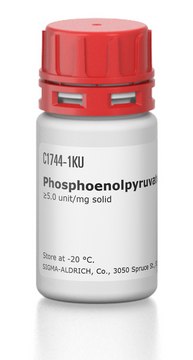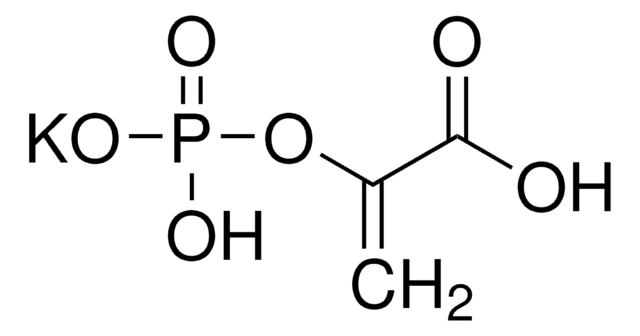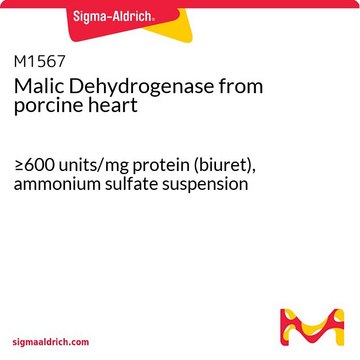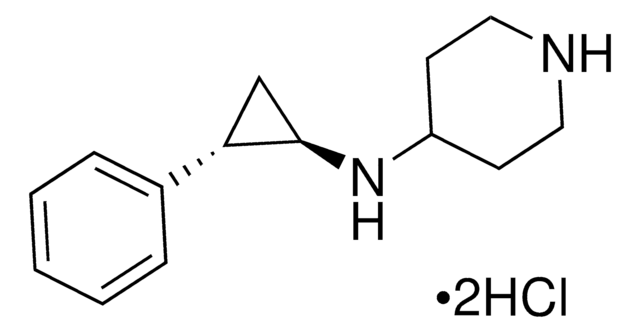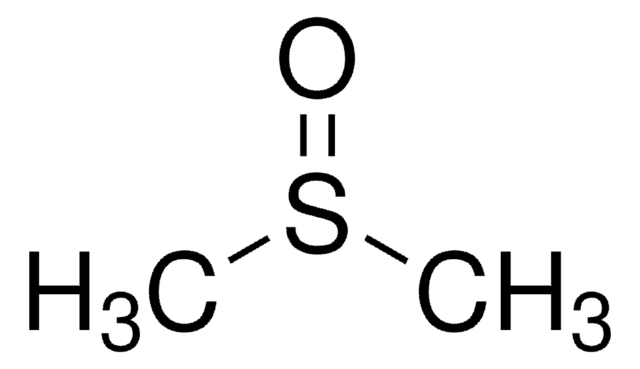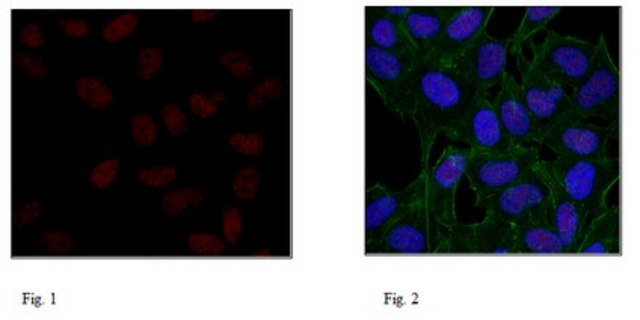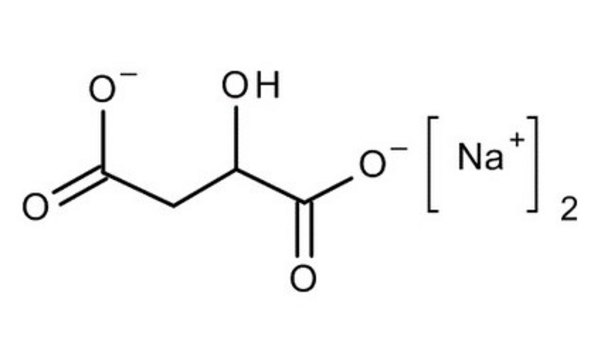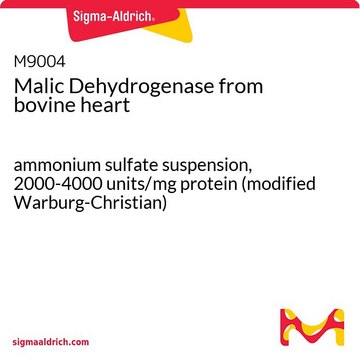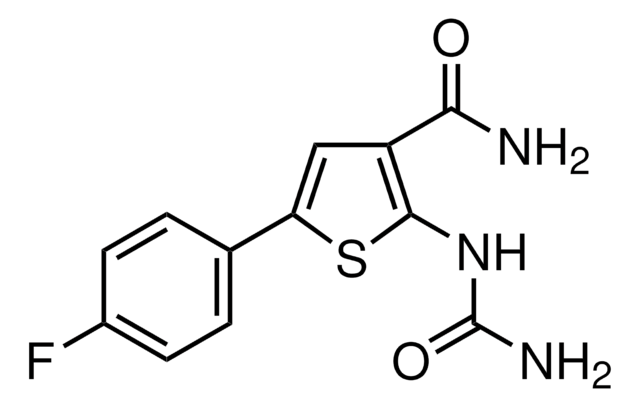524810
Phosphoenolpyruvate Carboxylase, Zea mays
Synonym(s):
Phosphoenolpyruvate Carboxylase, Zea mays
Sign Into View Organizational & Contract Pricing
All Photos(1)
About This Item
CAS Number:
MDL number:
UNSPSC Code:
12352202
Recommended Products
form
lyophilized
Quality Level
specific activity
≥1 units/mg material
≥5 units/mg protein
manufacturer/tradename
Calbiochem®
storage condition
OK to freeze
desiccated
solubility
0.5% Tris-HCl (50 mM), pH 7.0: soluble
shipped in
ambient
storage temp.
−20°C
General description
Native phosphoenolpyruvate carboxylase from Zea mays. Catalyzes the fixation of carbon dioxide with phosphoenolpyruvate to produce oxaloacetate and inorganic phosphate. May be used to determine carbon dioxide levels in biological fluids. Has an optimal pH of 8.0.
This product has been discontinued.
Native phosphoenolpyruvate carboxylase from Zea mays. Catalyzes the fixation of carbon dioxide with phosphoenolpyruvate to produce oxaloacetate and inorganic phosphate. May be used to determine carbon dioxide levels in biological fluids.
Native phosphoenolpyruvate carboxylase from Zea mays. Catalyzes the fixation of carbon dioxide with phosphoenolpyruvate to produce oxaloacetate and inorganic phosphate. May be used to determine carbon dioxide levels in biological fluids.
Warning
Toxicity: Standard Handling (A)
Unit Definition
One unit is defined as the amount of enzyme that will release 1 µmol of CO₂ per min at 30°C, pH 8.0.
Reconstitution
Unstable in solution; reconstitute just prior to use.
Legal Information
CALBIOCHEM is a registered trademark of Merck KGaA, Darmstadt, Germany
Signal Word
Danger
Hazard Statements
Precautionary Statements
Hazard Classifications
Resp. Sens. 1
Storage Class Code
11 - Combustible Solids
WGK
WGK 1
Flash Point(F)
Not applicable
Flash Point(C)
Not applicable
Regulatory Information
监管及禁止进口产品
Certificates of Analysis (COA)
Search for Certificates of Analysis (COA) by entering the products Lot/Batch Number. Lot and Batch Numbers can be found on a product’s label following the words ‘Lot’ or ‘Batch’.
Already Own This Product?
Find documentation for the products that you have recently purchased in the Document Library.
Erika A Serrano-Romero et al.
The New phytologist, 226(6), 1594-1606 (2020-03-01)
The cold acclimations of mesophyll conductance (gm ), bundle-sheath conductance (gbs ) and the CO2 concentrating mechanism (CCM) of C4 plants have not been well studied. Here, we estimated the temperature response of gm , gbs and leakiness (ϕ), the
Our team of scientists has experience in all areas of research including Life Science, Material Science, Chemical Synthesis, Chromatography, Analytical and many others.
Contact Technical Service